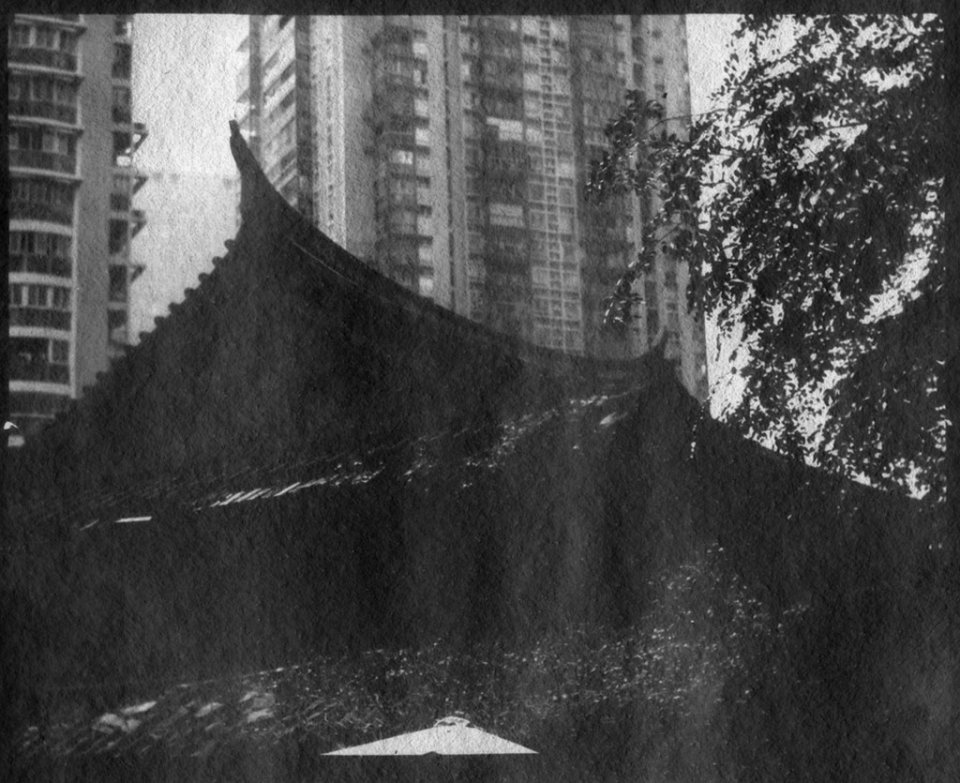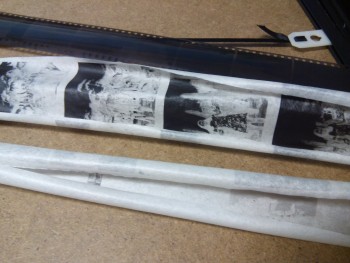
A few years ago, lovers of photography “traditional” which I took the very fear seeing their favourite references disappear from the market one after the other. Fortunately, film photography has returned the interest from photographers and the market (Although niche, with the corresponding rates) seems perennial. Even if some films have definitely gone (except in my fridge), some small manufacturer have taken up the torch by perpetuating some movies and products, even in leaving new.
All this to say that there is some time, I discovered with pleasure that a new film noir & White was released, of Moreover manufactured handmade, of addition in France, so I had to try it !
After a few unsuccessful attempts, I was able to get two copies at the shop Kodak Express Châtelet.
The particularity of this film is to use as a support for the Japanese Washi paper (where his name), What intends it to artistic applications. In addition, It is an orthochromatic film, so insensitive to red, What has its importance according to the subject !
He is available in format 120 and plans-film.
Shooting
Any average device format may be appropriate, which includes a good part of the devices “collection” !
As regards me :
- For the first film : a Voigtlander Bessa (first version) with a cache to make photos in format 4.5*6 instead of 6 * 9 cm, as well as a light meter purchased Leningrad 100 rubles (2€) to a Babushka to Izmaylovo in Moscow market
- For the second : a Pearl River (6*6 Chinese image on the principle of the Rolleiflex or Yashica) purchased at a flea market in Shanghai market, with the meter above.
Nothing special at this stage, on framework and exposes normally, It must just take into account the sensitivity of 25 ISO (or 22 GOST on a Soviet light meter).
Development
This is found several peculiarities compared to a film noir & classic white :
- We can develop the film under inactinic light (advantage of using an orthochromatic film !)
- the development is done in vats, It soaks the film produced by back and forth. Indeed the film is very fine (as of cigarette paper; I was surprised by developing the first film, I thought of an intermediate layer between the protective paper and the “true” sensitive layer !) and for this reason it is impossible to wrap a coil.
- It uses an eye-opener for papers. Lomig (the manufacturer) recommends the Eukobrom diluted 1+1
For my part I used the available at Fotoimpex concentrated Eukobrom, that is diluted to 1+9 and that is supposed to be equivalent to the formulation to 1+1. The advantage is that the bottle of concentrate is smaller, handy if you need to carry it (or pay the shipping costs !).
First thing, It is necessary to soak water film to avoid it will kink. Despite its thinness, It is resistant and the entire process runs smoothly.
Images appear very quickly (about 30 seconds as revealing the paper). I have however revealed during 5 minutes to be sure that the pictures are developed at bottom.
It does not stop bath, but a clear water rinse.
The fixing is done with a standard Fixer (for example of the Agfa Agefix for film and paper, found in small bottles at an affordable price).
I haven't used wetting agent, because seen the film “drinks” products, I do not know what consequences this can have. And in any case, If a dust just stand on the film, This is not drama…
Results
When drying, the film wraps on itself. I will try to find clips at least as wide as the movie, This will probably save time of passage in press !
We note that the negatives are very contrasting, the latitude of pose seems less important than on a classic film.
The structure of Washi paper appears differently if one scans the negative flatbed or transparency. Flatbed, bright areas have an embossed appearance (after passage in positive of course), It is the opposite of transparent, We see the fibres of the paper in dark areas.
Finally, Since the paper is less transparent than the gelatin of the classic movies, It takes a good scanner to exploit the nuances, and for the draw by enlarger, expect long exposure time.
Conclusion
The Washi film offers interesting prospects and made me want to start tinkering in the darkroom !
It's a film I'd recommend to people who are familiar with the treatment in the darkroom and who are interested in alternative processes.
The Washi film is manufactured by the photographer Maria Perrotin, He is available in format 120 (12€ film) as well as plan-film. It can be found in some shops and specialist distributors, notably in Paris, Berlin, London and … Saint-Petersburg ! More details on the website of Maria : www.lomig.fr


















Thanks for this feedback; because apparently, It is one! I believe that one day I will put a Washi roll in my Bronica.
Cdlt,
Cbalg
Fantastic work, thanks for the share. How did you uncurl the negs?